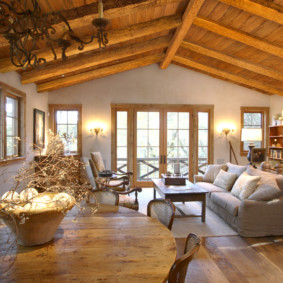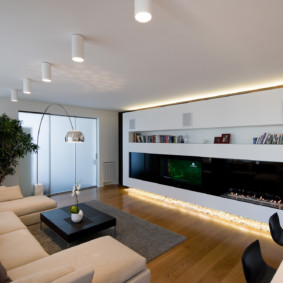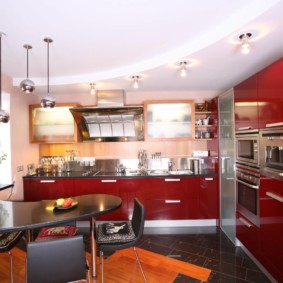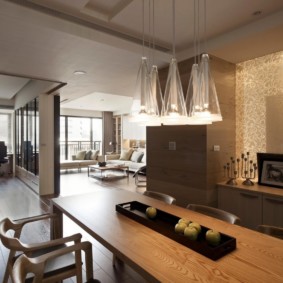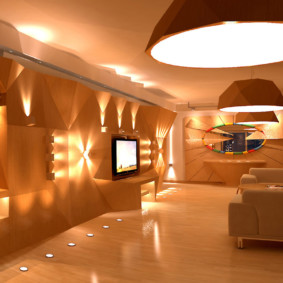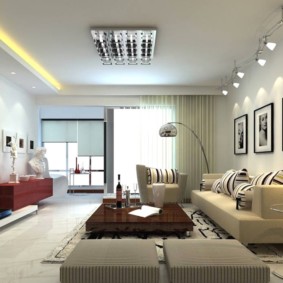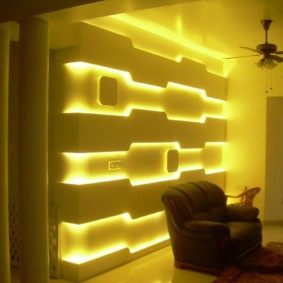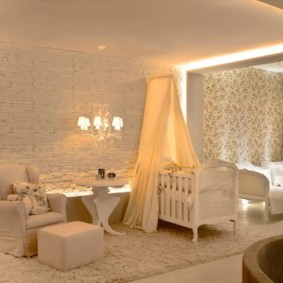 Interior
The use of the loft style in the interior of one-room apartments
Interior
The use of the loft style in the interior of one-room apartments
The perception of the design of the room and how a person will feel in it directly depends on the organization of lighting. Properly selected light can create and emphasize accents in the interior, visually increase or decrease the space, and help in zoning the room. In this case, it is important to consider the features of the selection of lighting for a particular type of apartment.

To make the space seem larger and brighter, and the home is filled with comfort and warmth, it is necessary to carefully consider the lighting in the apartment.
Lighting in a modern studio apartment is used for dividing into zones. Designers recommend accenting with the help of more powerful lamps, according to the lighting temperature close to daylight, the kitchen area. And for a resting place, a dim light is well suited. The lighting standards of the studio depend on its area - for every 5 square meters should be at least 60-75 kW of power.

Light sources should give a feeling of confidence that everything is in place.
The light in a standard one-room apartment should come from eight fixtures, including both basic and local lighting. According to the rules, the total minimum lamp power should be close to 300 kW.
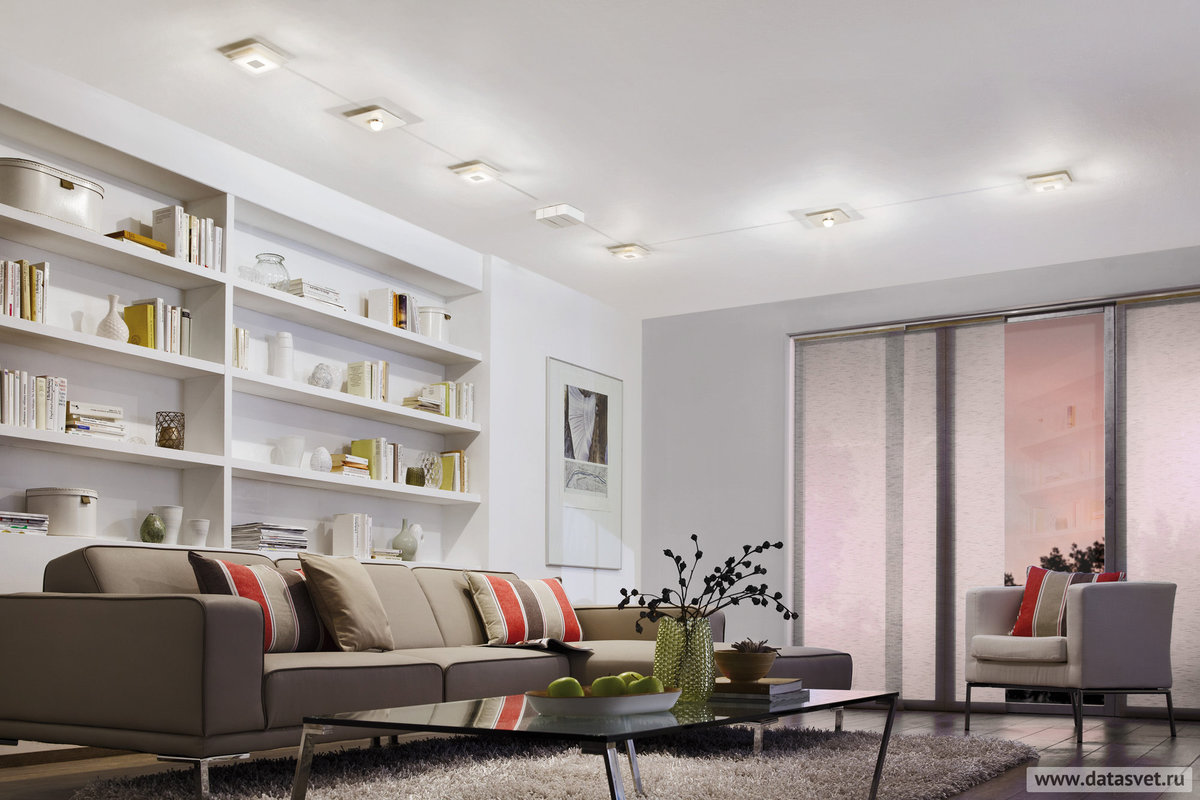
When planning a lighting system for an apartment of a small area, you can not overload it with an excessive number of lamps.
In a two-room apartment, nine lighting fixtures with a total capacity of 560 kW will provide a sufficient level of illumination.

Lighting in the apartment is natural and artificial. To achieve the best result, you need to correctly combine both of these light sources.
For a treshka eleven light sources are necessary. Excluding decorative lighting, their total power should be close to 660 kW.

If the windows of the apartment overlook the shadow side and the sun in the room is a rare guest, do not close the windows with blackout curtains.
Important! In modern conditions, when creating a lighting project, it will be more correctly oriented not on the power level, but on the light transmission of the lamp and its type. The total light transmission index depends on the type of lamp used. This is the ratio of the emitted light flux to the lamp power. For example, an incandescent lamp has a minimum index of 15 lm / W. And in halogen it is four times more - 60-90 lm / W
Fashionable lighting options in the interior of the apartment
Content
- Fashionable lighting options in the interior of the apartment
- The main types of lamps for creating lighting in an apartment
- Organization examples and ready-made lighting schemes in different rooms of the apartment
- Types of smart remote control light in the apartment
- VIDEO: How to make the lighting in the apartment.
- 50 design options for lighting rooms in the apartment:
Chandeliers are a kind of pendant lights with several bulbs. The advantage of such a lamp is diffused light, which, if desired, can be directed up or down. Uplighted plafonds give the effect of visually enlarging a room vertically. Light of this orientation is softer, and is recommended for a bedroom, a children's room, a living room. Downward rays of light give bright lighting in the apartment, and are recommended for lighting the workspace.

The selection of the type of chandelier depends on the style of the interior.
Floor lamps - a variant of local lighting. Such a floor lamp gives a soft, diffused light, which makes the room more comfortable. Floor lamps are stationary and portable. For apartments use the portable version.Some luminaires have an additional module with directional light, which is convenient to use for the working area or for reading in the recreation area.
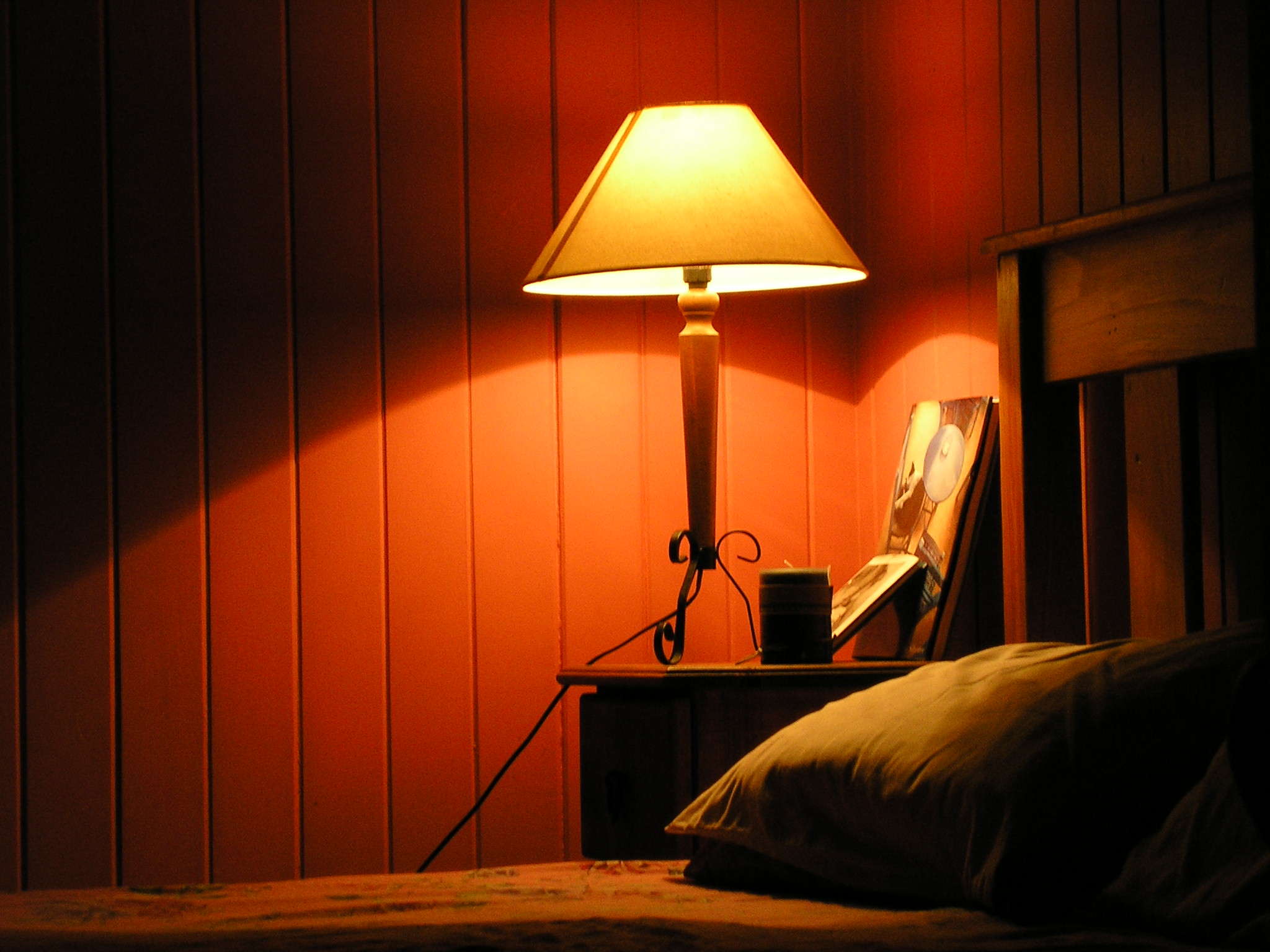
Modern models make it possible to adjust the luminous flux.
Important! In a floor lamp, the lampshade of which is made of flammable material, it is recommended to use LED lamps with warm light. Incandescent and halogen lamps give strong heat, as a result of which the fabric or wood can catch fire.
Table lamps - such lighting is used both in the study or in the area (directional bright light), and in a place for relaxation (for example, on a bedside table). In the latter case, the light is softer and more subdued.

Designer table lamp can be a worthy decoration of the interior.
A sconce is a lamp, which is a design of artistically made horns with lampshades. It creates a soft, comfortable atmosphere, thanks to its dim light. Sconces are also used as a source of basic lighting, as a replacement for a chandelier in rooms with low ceilings. In this case, more powerful lamps are used in combination with an almost transparent lampshade.

As for artificial lighting, it should be multi-level to fully cover all functional areas.
Note! Sometimes confused sconces and wall lamps. However, not every wall lamp is a sconce. The name "sconce" comes from the French bras - "hand". Indeed, the outlines of the lamp in profile resemble an outstretched arm holding a ceiling. Usually the lampshade is pointing up. And ordinary spotlights can be adjusted in any direction. In addition, the sconce has its own switch - a cord or a button, while the lamps are controlled by a wall switch, like chandeliers.
Ceiling and wall spots or spotlights. These are overhead or recessed spotlights, usually with an LED lamp. They differ in the directional light beam, the direction of which can be adjusted, creating light zones in the room.

The spots are also used as track lights.
Track or tire lights are a modern lighting system where light sources are attached to the guide profile (busbar) and, if necessary, move along it. Such lamps can be wall and ceiling. They are used with equal success both as a base and as a local lighting. Using the control panel, you can adjust their brightness.

Track lights in the interior of the apartment in the photo look harmoniously in the interior of high-tech, loft, modern.
LED strips and cords are used for local lighting and decorative lighting. Night illumination in the apartment can be made of LED strips on the floor, ceiling or walls. The disadvantage of such a backlight is the lack of the ability to adjust brightness.

Creating deep shadow areas in the apartment is not desirable.
Optical fibers - used for the design of decorative lighting and illumination at night in the apartment. This is a system with a light source (a so-called projector), and a crystal or lens for refracting a light beam at the end of an optical fiber. With this lighting system you can achieve a wonderful decorative effect (for example, to create a "northern lights" or "starry sky" in the interior of the room).

As a light source, halogen lamps can be used.
The main types of lamps for creating lighting in an apartment
The main types of lamps that are currently in use.
- Incandescent bulbs are the cheapest option. The light of an incandescent bulb has a spectrum that is pleasing to the eye, and does not flicker, as in a luminescent one. In addition, they do not last long, and are rather fragile.

This type of lamp has a tangible minus - high energy consumption.
- Fluorescent lamps - serve longer than incandescent lamps and have a relatively greater light output.Older models have not gained popularity due to unpleasant white light and a characteristic crackle. Now it is possible to choose the right color for lighting, and in the new versions the cod is no longer audible.

The flickering of light from such a lamp can damage vision. Therefore, for continuous lighting, this option is not recommended.
- Halogen lamps are most suitable for creating local lighting. This is due to the fact that they give a narrow, directed beam of light rays. Therefore, such lamps are an ideal tool for local lighting. Their contact with fire hazardous materials should be minimized - the surface of the lamp may become very hot.

Their flickering is minimal, and does not cause significant harm to the eyes.
- LED or LED-lamps - a new and optimal option in terms of efficiency. Modern LED lamps can be used as a complete replacement for incandescent lamps.

There is a choice of both warm and cold lighting of different capacities.
Important! When using incandescent lamps, fixtures must be selected from heat-resistant materials. This type of bulb heats up quickly and creates a high temperature on the surface of the lampshade.
Organization examples and ready-made lighting schemes in different rooms of the apartment
Living room
- When calculating the basic lighting design, you need to take into account the area and shape of the room. For a standard room in a typical apartment, one multi-track chandelier will be enough. For an area of over 25 square meters. m. it is necessary to increase the number of light sources. In this case, built-in or track lights are well suited. If the living room has a rectangular shape - it is advisable to install two light sources at opposite ends of the room.
- Sources of local lighting (sconces, floor lamps, table lamps) will help to divide the living room into zones. For example, in a recreation area, a floor lamp or sconce will be appropriate, and in the working area a table lamp with cold light.
- With the help of decorative lighting in the living room, you can emphasize the interior elements - paintings, niches, vases, etc. A good way to do this would be to illuminate a niche with a TV, or a curtain lighting around the perimeter of the room.
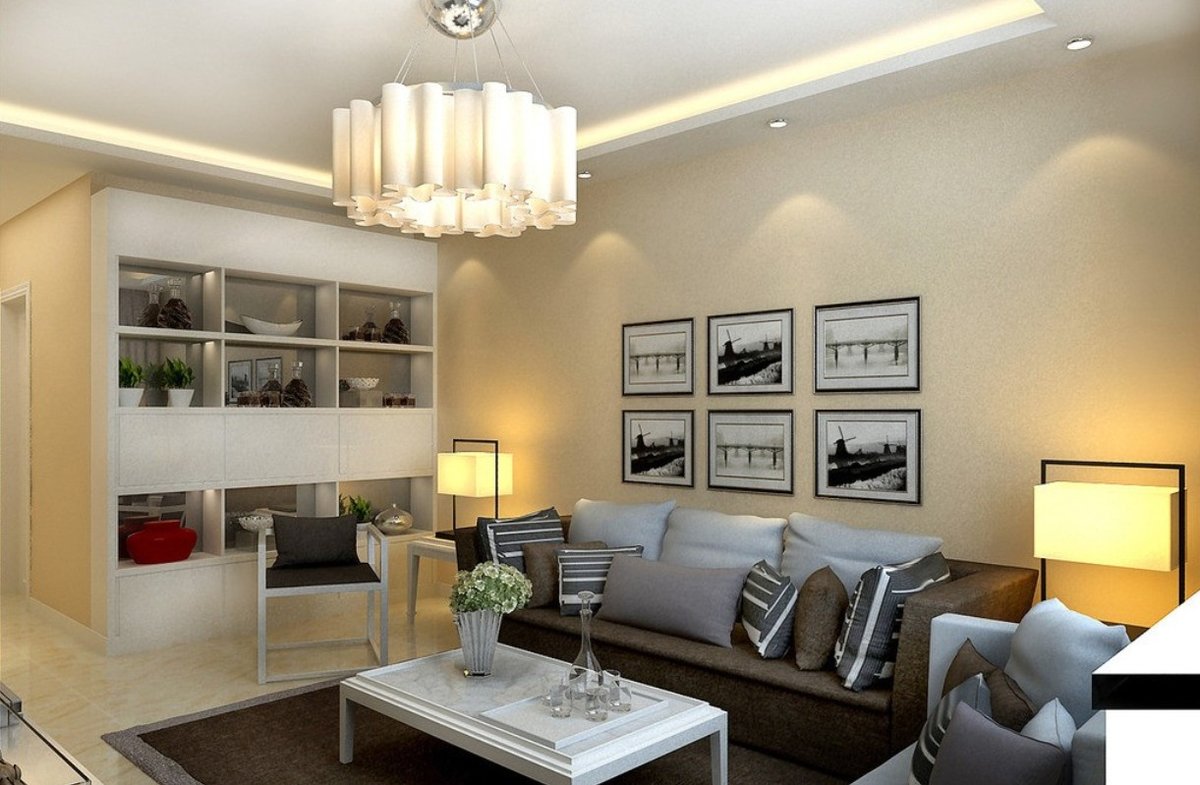
A chandelier is often used as the main source.
Attention! When choosing a chandelier for the living room, you must remember the rule: the height from the edge of the chandelier to the floor should not be less than 210 cm. Therefore, in a room with a low ceiling, a massive chandelier will be inappropriate. And the lighting problem is easily solved with the help of wall or ceiling spots.
Bedroom
- The base light should not be cold and bright, as the bedroom is a resting place. It uses chandeliers with upward shades or opaque lampshades of ceiling lights. The ideal option is to adjust the intensity of the main lighting.
- Local lighting - first of all, it is the illumination by the bed. As light sources, sconces, wall lamps with soft light, table lamps, floor lamps are used. To illuminate a mirror or dressing table, spot lighting is used on both sides.
- Decorative lighting - LED cords will be appropriate as a night illumination. A fiber optic system will help create spectacular night lighting.

The lights built into suspended ceilings or into suspended structures made of drywall look very nice.
Kitchen
The basic lighting in the kitchen should not be too bright, since the first thing you need is the illumination of work surfaces. This is a table on which food is cooked, a stove or a hob. As an additional illumination of the stove, hoods with built-in backlight are used. In the dining area, a softer and warmer light is appropriate.
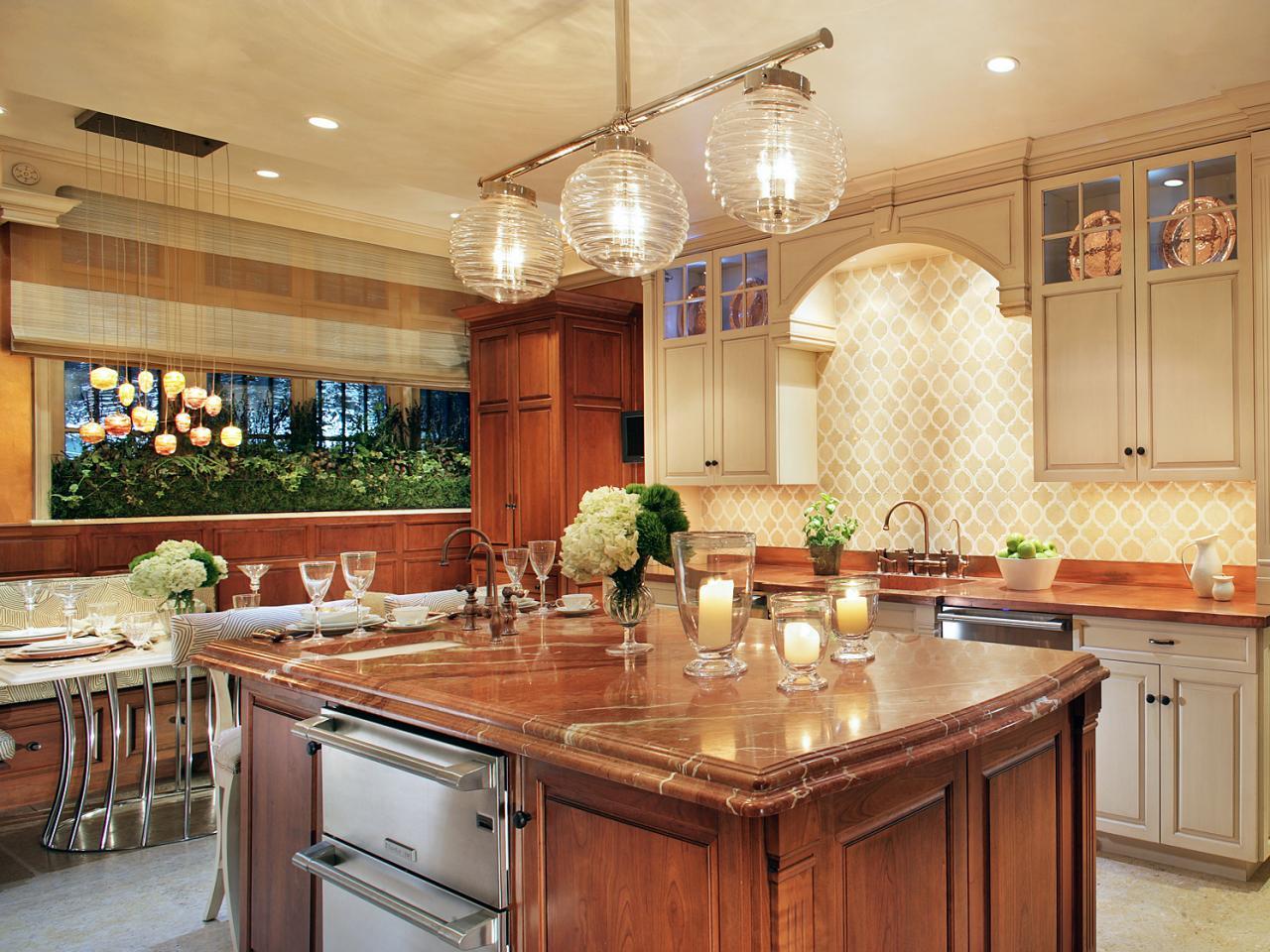
The table can be illuminated with spotlights with directional beams.
Children
All fixtures must be made of shockproof materials, and are located out of the reach of children.Be sure to take care of the prevention of fires - pay attention to the type of bulbs and the integrity of the wiring.

The key to organizing lighting in a children's room is safety.
When organizing an interior in a nursery, it is important to distinguish a recreation area and a workplace (where the child will, for example, do homework). For the working area, brighter, more precisely focused lighting is used.
Hallway
The entrance hall is usually devoid of natural light. Therefore, the artificial should be the brightest in the apartment. For a visual increase in space, wall spots are used, aimed at the top of the wall.

Additionally, you can highlight the mirror in the hallway, or wardrobe area.
Bathroom and toilet
The main thing here is the moisture resistance of light sources. Built-in ceiling spots showed their best performance, preferably with daylight. When organizing local lighting (near the washbasin or mirror), do not direct the rays from above. The best option is side lights on both sides.
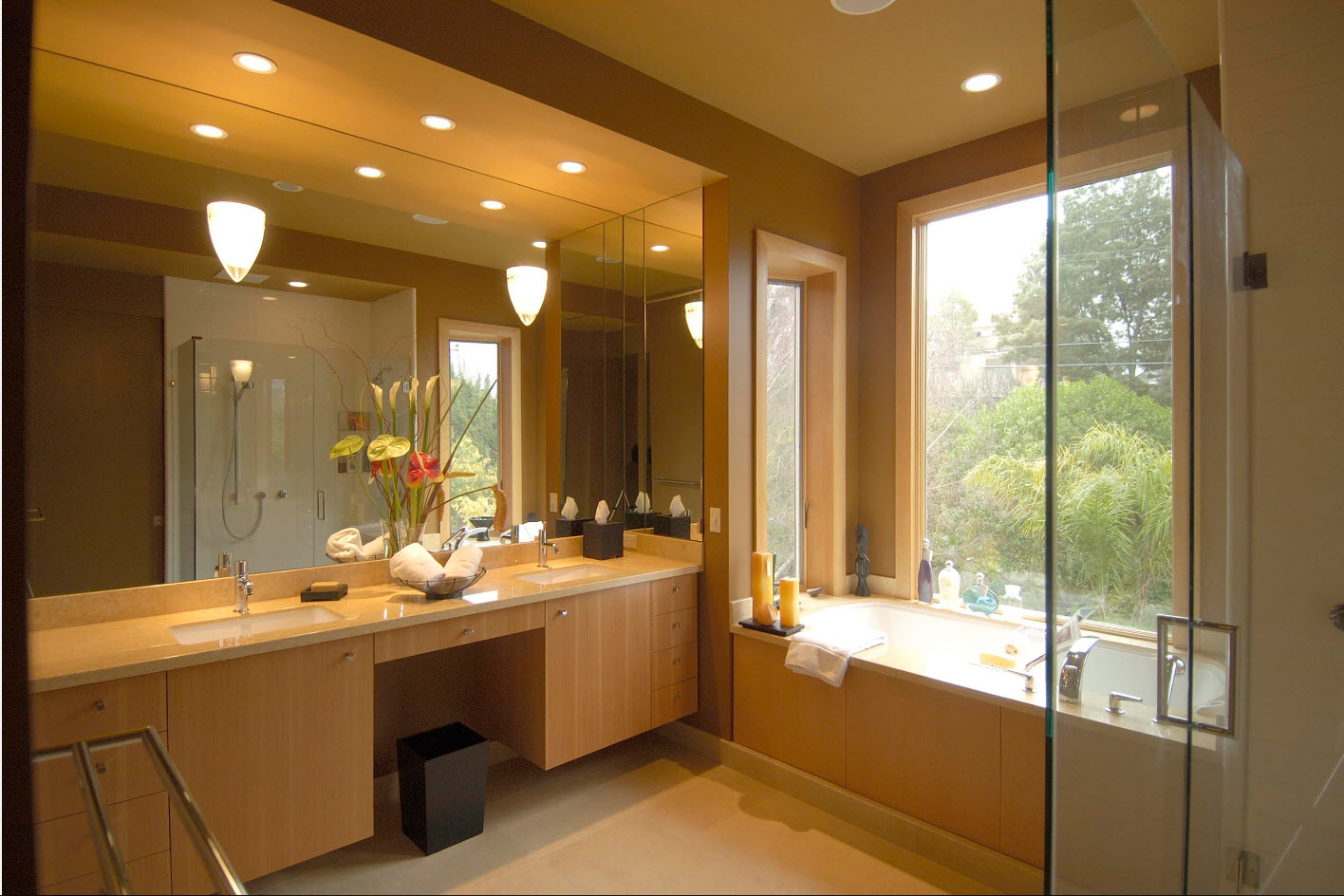
The bath or shower may have its own lighting.
Types of smart remote control light in the apartment
Modern Smart Home systems make it possible to control lighting remotely. Wireless control, for example, using a mobile phone, provides:
- light tracking of movements around the apartment using sensors;
- switching power supply modes;
- turning off all or part of the lighting fixtures;
- light level adjustment;
- inclusion of decorative illumination;
- imitation of the presence of the owners in the apartment (turning on the light in their absence);
- integration with other systems (for example, automatic lowering of curtains).
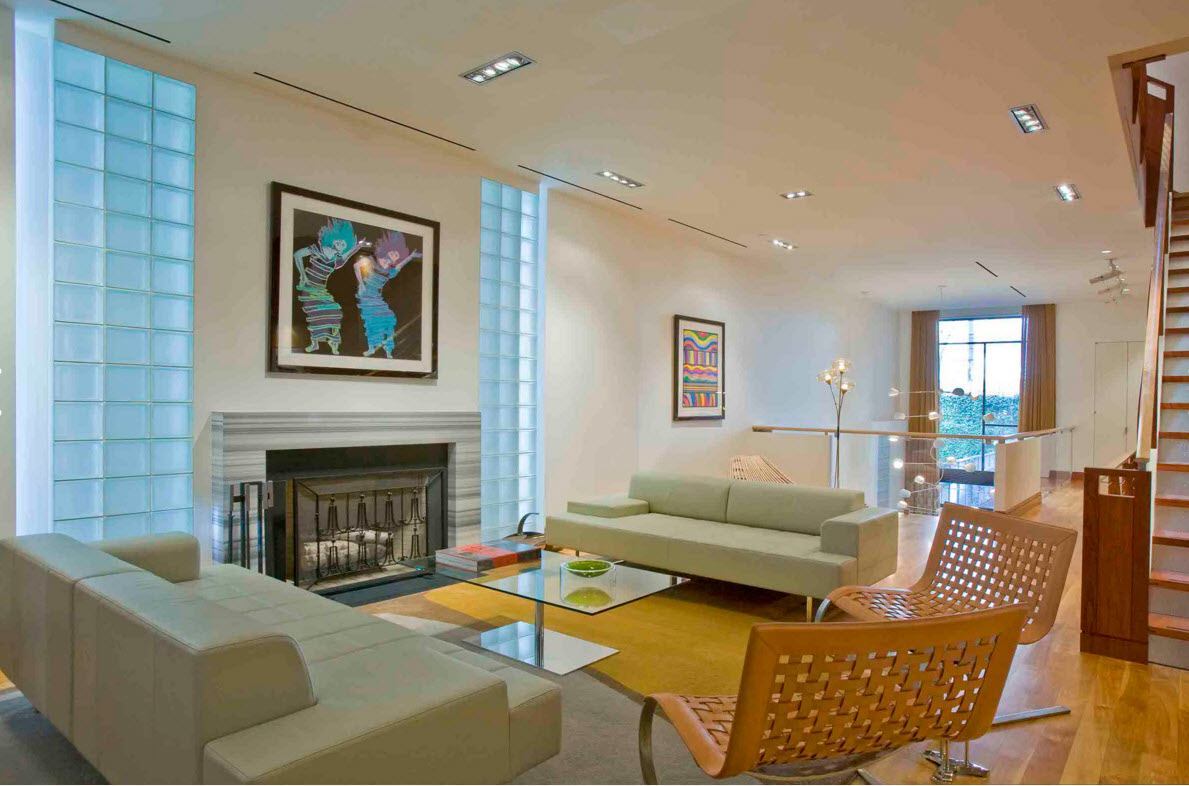
With the successful alternation of various sources of light and shadow, you can hide the existing flaws and highlight the strengths of the room.
The main types of control systems:
- Local - in a separate room.
- Global - most often used in apartments. In this case, sensors are present in all rooms.

Modern lighting design is actively used in interior decoration.
Photos of lighting in the interior of the apartment and photos of decorative lighting ideas give a visual representation of the unique possibilities of lighting design.
VIDEO: How to make the lighting in the apartment.

